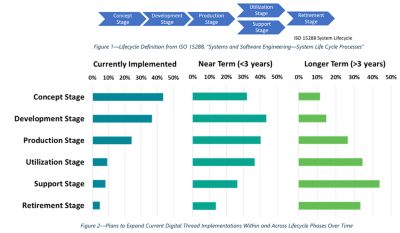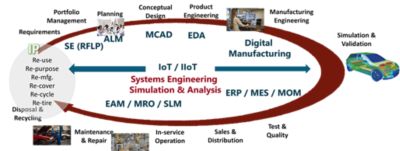-
-
Access Free Student Software
Ansys empowers the next generation of engineers
Students get free access to world-class simulation software.
-
Connect with Ansys Now!
Design your future
Connect with Ansys to explore how simulation can power your next breakthrough.
Countries & Regions
Free Trials
Products & Services
Learn
About
Back
Products & Services
Back
Learn
Ansys empowers the next generation of engineers
Students get free access to world-class simulation software.
Back
About
Design your future
Connect with Ansys to explore how simulation can power your next breakthrough.
Free Trials

Modern product development is incredibly complex, bringing together more data, more digital tools, and more collaborators. Ansys Minerva software provides discipline and clarity by enabling a single digital thread.
Product development was once a siloed, highly manual, and sequential process, led by specialized engineers who independently designed, tested, and fine-tuned each product. Functional specialists in fluids, structures, electromagnetics, and other physics manually handed design tasks back and forth, testing components and tweaking the design step by step. Finally, after months, the approved design moved on to the stages of physical testing, quality assurance, materials procurement, and manufacturing.
Forget all that. Today’s products are designed in a fast, multifunctional, collaborative process in which downstream issues like manufacturability, materials availability, and cost are considered from the earliest stage. Competition has increased, customers crave innovation, and there’s no time to wait for a sequential, highly manual development process to play out. Everything happens faster and, often, all at once. Thanks to improvements in simulation software, multiple physics are applied simultaneously at both the component and system level. Problems are solved quickly, designs are verified digitally, and prototyping is minimized.
The primary benefit is that today’s products are more rigorously tested than ever, at a much faster pace and significantly reduced development cost. The primary downside? Increased cross-functional collaboration and compressed design cycles — combined with multiphysics analytics rigor and fast, iterative modeling — add up to a lot of process complexity and data. In fact, the data managed by a single product development team today can reach terabytes.

CIMdata's industry leader interviews reveal that companies are motivated and adopting a digital thread with a sense of purpose. Most of the use cases support product development, providing some degree of requirements traceability and integration between engineering and production.
Ansys and CIMdata Agree: The Solution Is SPDM
A simulation software leader for over five decades, Ansys has witnessed the evolution of product development firsthand. So has our adviser CIMdata, a leading product life cycle management (PLM) consultancy founded in 1983. Both Ansys and CIMdata agree that the solution to managing today’s complexity is simulation process and data management (SPDM), which creates structure, discipline, and digital integration that connects all development participants, processes, and data.
By providing the entire team with access to the same centralized, real-time data about project results, milestones, and status, SPDM creates a shared, accurate perspective that informs every product development activity. SPDM enforces best practices, accountability, and process discipline. It digitizes and tracks every task, workflow, and handoff. Simply put, it produces clarity from seeming chaos.
Recently, Ansys joined with CIMdata to host a webinar on the benefits of SPDM, called “The Value of SPDM to Physics-Based Simulation, Digital Thread, and Digital Twin.” The webinar was led by Sandeepak Natu, co-director of the Simulation-Driven Systems Development Practice at CIMdata. Based on his own extensive experience, Sandeepak emphasized the growing importance of SPDM in optimizing product life cycles and digitally transforming the innovation process.
“Throughout CIMdata’s long relationship with Ansys, we’ve seen simulation evolve to become a cornerstone of product engineering, allowing for virtual prototyping and analysis early in the product life cycle,” says Sandeepak. “Throughout the development cycle, multiphysics simulations guide more intelligent, more profitable, and more successful design decisions — and we’ve seen that prove true with our CIMdata clients who use simulation software.”
According to Sandeepak, while simulation adds obvious value for product development teams, it also fuels process and data management complexity — especially since it’s one of many engineering technologies they’re using. “Product developers are probably also using application lifecycle management tools, mechanical computer-aided design (CAD) tools, electronic design automation tools, digital manufacturing tools, and other solutions,” Sandeepak says. “These tools are all linked to datasets, which may not be shared, accessible, or organized.
“What’s needed is a way for all these solutions to talk to each other and share data, providing engineers with end-to-end visibility and a single version of truth across the development cycle,” Sandeepak says. “SPDM was created to accomplish that.”
According to Sandeepak, CIMdata’s new clients often use tools such as PLM software and traditional product data management (PDM) software to manage the multiple software solutions, huge data volumes, cross-functional workflows, and iterative models associated with modern product development. But PDM solutions in particular fall short when considering simulation data and processes.
“Unlike PDM, a solution created specifically for simulation-driven development — like Ansys Minerva SPDM software — is the optimal way to master modern process complexity,” Sandeepak says. “Ansys Minerva software is purpose-built for the iterative nature of simulation. It enables collaboration across multiple systems, metadata population, historical data search, and data reuse. Minerva software not only effectively manages simulation insights, but it also integrates multiple digital tools and their datasets on a single agnostic platform via open application programming interfaces, or APIs.”
Sandeepak says SPDM is not optional for simulation users today, but rather imperative. “SPDM enhances the repeatability, reliability, and robustness of simulations,” he says. “It thereby impacts overall product and process quality, ensures compliance, and reduces overall life cycle costs. Implementation of a successful SPDM system maximizes organizations’ investment in all their tools, processes, and people.”

With the help of product life cycle management (PLM) and simulation process and data management (SPDM), a digital thread can be realized.
The End Result? A Clear, Cohesive Digital Thread
By facilitating seamless communication between different software applications and datasets, SPDM creates a cohesive end-to-end digital thread. This digital thread enables connected data flows, a single view of all the insights associated with a given product design, and easy integration of engineering with downstream processes like procurement and production.
SPDM also creates a solid foundation for a digital twin, or a dynamic model of an in-service product in the field. SPDM enables virtual product models, developed in the early stages of design, to be fed with real-world operational data. Not only are new designs built for realistic operating conditions, but engineering organizations can also achieve real-time feedback on how their existing products are performing and being serviced in the market. This leads to more relevant, up-to-date product insights that fuel meaningful innovation.
Sandeepak emphasizes that creating a digital twin is just one example of the value SPDM can deliver. “New use cases for simulation are emerging nearly every day, including the application of artificial intelligence and machine learning (AI/ML),” he says. “It’s time for product development teams to move away from scattered data, as well as manual processes and handoffs. Simulation processes and data have become critical enterprise assets, and they deserve to be managed as such.”
Begin Your Digital Transformation Today
CIMdata works closely with many Ansys customers to apply a structured methodology that guides organizations as they implement Minerva software. CIMdata’s proven approach to installing SPDM includes a roadmap that addresses technology, process management, data management, IT support, and governance.
As a first step, determine the potential benefits of SPDM and Minerva software for your organization with Ansys’s Digital Transformation Assessment. This tool helps quantify SPDM's impact on your business, from reduced cycle time and costs to increased design freedom and innovation. Contact Ansys to schedule your assessment today.
Just for you. We have some additional resources you may enjoy.
“Minerva software not only effectively manages simulation insights, but it also integrates multiple digital tools and their datasets on a single agnostic platform via open application programming interfaces, or APIs.”
— Sandeepak Natu, co-director of the Simulation-Driven Systems Development Practice, CIMdata
The Advantage Blog
The Ansys Advantage blog, featuring contributions from Ansys and other technology experts, keeps you updated on how Ansys simulation is powering innovation that drives human advancement.


